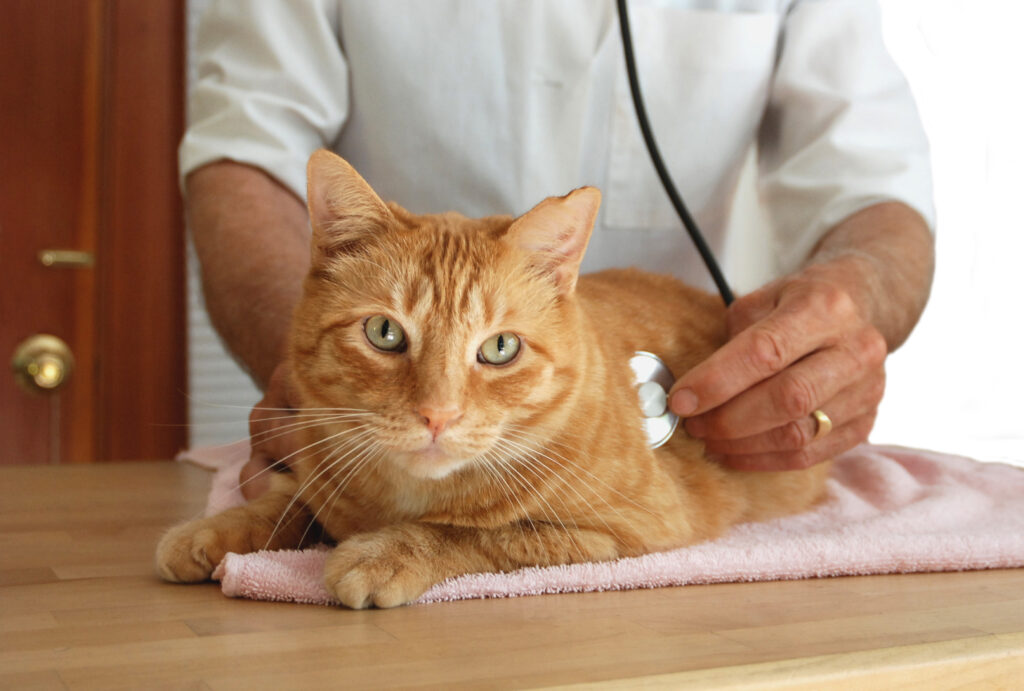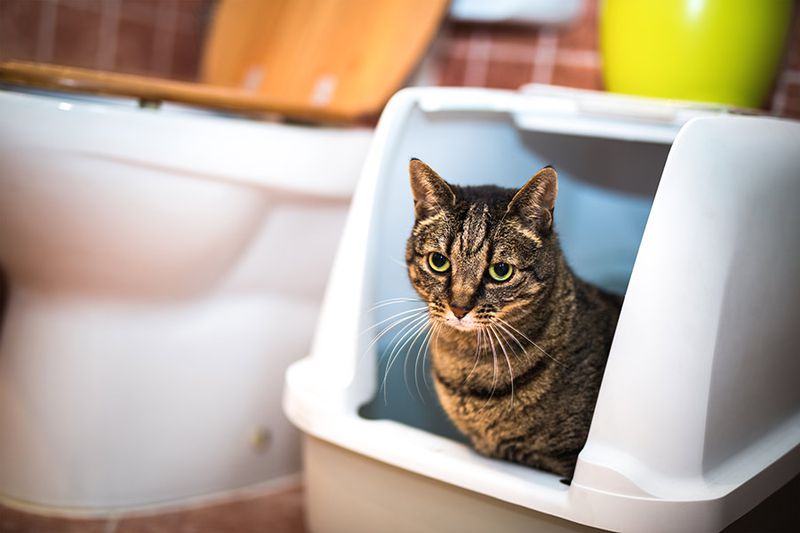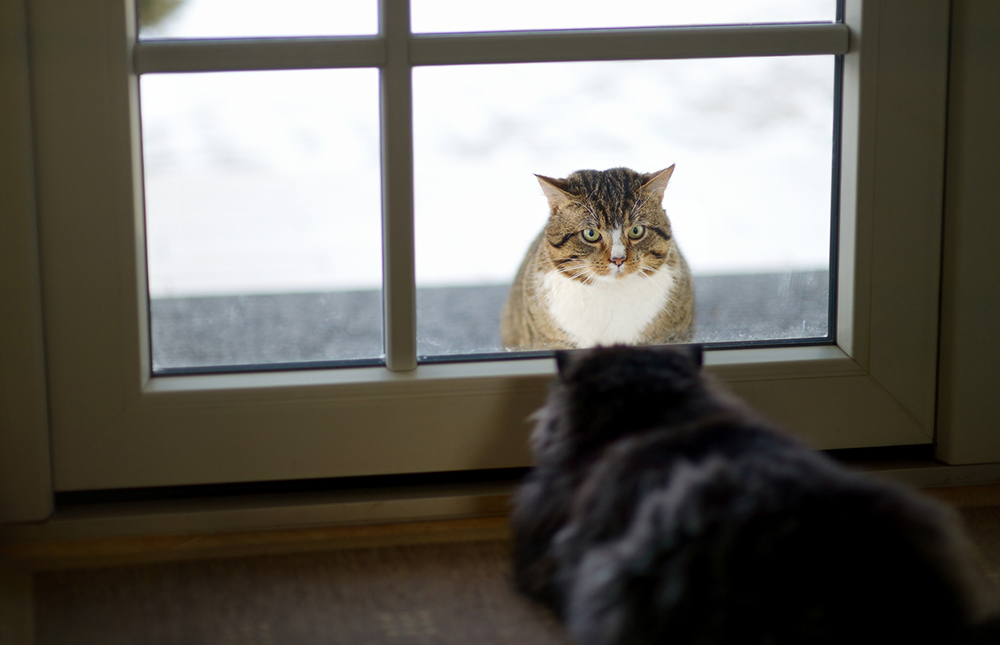There are over 42.7 million cat owners out there according to a survey conducted by the America Pet Products Association (APPA). Many of those owners have multi cat households. Now, out of those millions of cats living in homes, more than 10% of them will exhibit litter box issues. That’s a lot of cats.
One of the number one reasons cats are surrendered to animal shelters is because of inappropriate elimination. As many cat owners can agree, accidents in the house are difficult to clean and often these behaviors are frustrating to understand and repair. While we could write pages and pages of information on feline behavior, below you’ll find the four big things to check when troubleshooting your litter box woes.
Rule out a Medical Cause
Cats are masters at masking illnesses and often do not begin to exhibit issues until they have been suffering for some time. If your cat begins to have inconsistencies using the litter box, a trip to your regular veterinarian is in order.

A urinary, bladder or kidney infection can all affect your cat’s ability to “make it” to the litter box in time, as well as causing your cat discomfort. Often these infections can easily be treated, and your cat will resume normal litter box usage.
Has your older cat stopped using the litter box? Sometimes it isn’t an infection but can be discomfort. Possibly your older cat has begun suffering from arthritis and it’s no longer easy for him to climb in and out of the high sided litter box he has used for years.
Litter box Placement
Cats are sensitive animals and do not enjoy having their litterbox placed in high traffic areas. It is important to make sure your litter box is placed somewhere easily accessible to your cat but also in a quiet and low traffic space. If you live in a multi floored house, it is recommended to keep your litter box on whichever floor your cat spends most of their time.

Do you have multiple cats? You should have multiple litter boxes! The rule of thumb is the number of cats + 1. If you have 2 cats, you should have 3 litter boxes. This allows your cats to have options. It is also ideal to have a variety of types of litter boxes if possible. Some cats prefer uncovered litter boxes instead of the covered variety.
Litter Types
Just like us, cats have preferences. Many cats do not like when their cat litter is abruptly changed. Just like with food, if you’re changing your cats’ litter it is recommended to do it over time to limit any sort of avoidance behavior.

Cat litters come in a variety of textures, materials and sizes. It is up to you to see what your cat prefers! Often cat that have been front declawed develop “substrate preferences” likely due to how the litter feels to them. If you aren’t sure where to start, check out Dr. Elsey’s cat litter. Their litters come in a variety of particle sizes AND they even offer a litter that has additional pheromones designed to “attract” your cat.
Environmental Factors

Last, we must consider that cats are finicky creatures. They are sensitive to changes in their environment and often slight changes can unsettle a kitty. If you’ve ruled out all the above issues, started thinking about your cats living area. Has anything changed? Did you do any serious furniture moves? Is there something new in the house that might be scaring your cat? Did you get a dog? Is there a stray cat visiting the porch? Is there a new person living with you? Your cat might not be happy about it and is showing that by their litter box usage.
Environmental factors can be tough to figure out and even once you’ve figured out the cause sometimes it isn’t always an easy fix. Addressing your cat’s anxiety might be the key here. Considering adding a pheromone diffuser to your cats main living space. Spend more time interacting with your cat but grooming, playing with toys or even going outside (only if this is something your cat is already accustomed to).
Cats are part of our lives and we’ll do everything we can to make sure they’re happy and healthy, but to maintain our sanity, litter box issues should be addressed ASAP to avoid creating a habit. Hopefully one of the tips above can help you out. If not, try visiting the Cat’s International to check out their in depth guide!
 That Pet Blog That Pet Place Pet Blog
That Pet Blog That Pet Place Pet Blog
